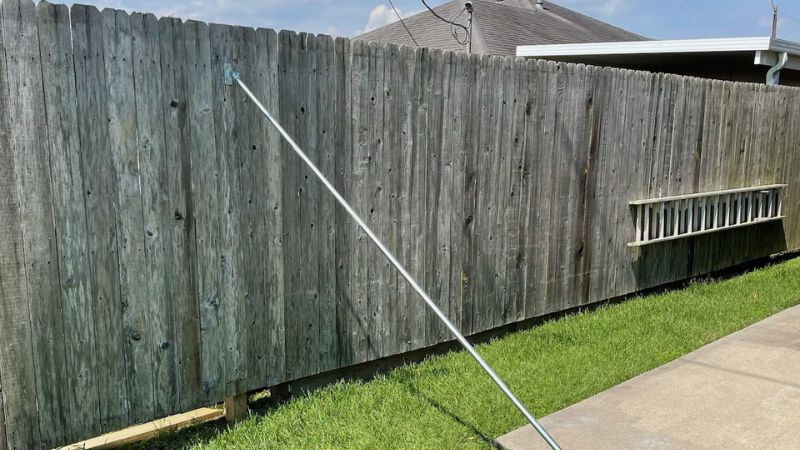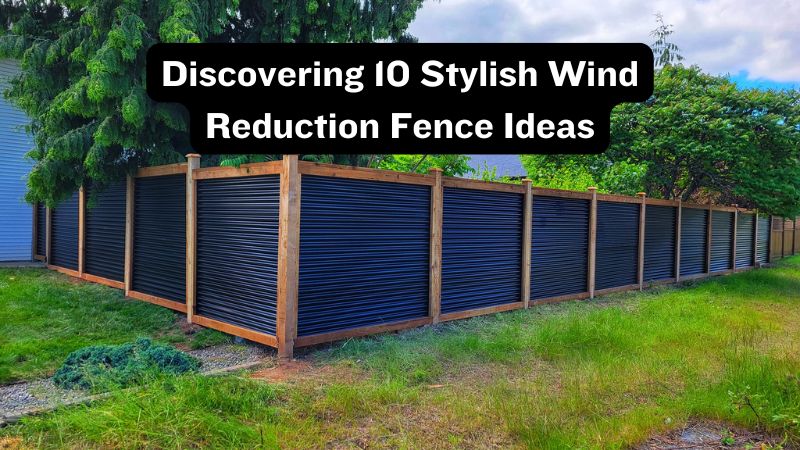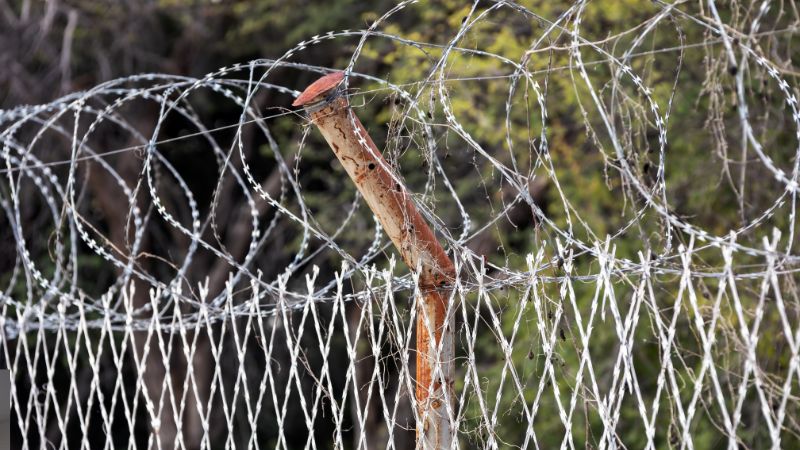Strong winds can wreak havoc on fences, leading to costly repairs and potential damage to your property. Implementing effective strategies is crucial if you’re looking to safeguard your fence from high winds. This guide’ll explore 10 Tips To Brace Your Fence Against High Winds, ensuring it withstands severe weather conditions. Whether you have a wooden, vinyl, or metal fence, these insights will help you fortify your structure, reducing the risk of wind-related damage. From choosing the right materials to proper installation techniques, these tips will enable you to protect your investment and maintain the integrity of your fence for years to come.
10 Tips To Brace Your Fence Against High Winds
1. Inspect and Repair Existing Damage
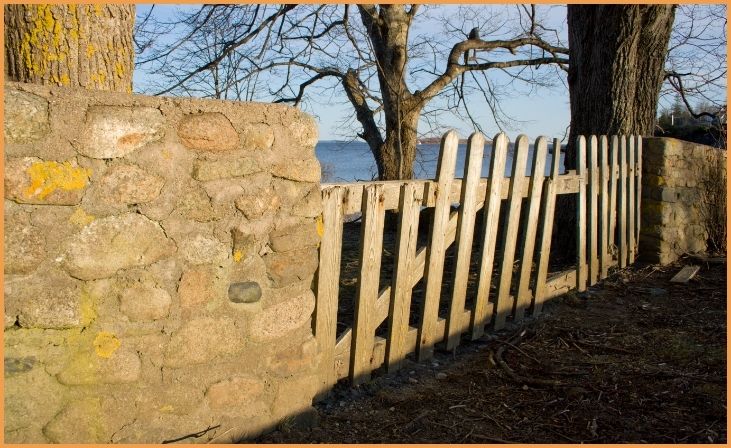
Before reinforcing your fence against high winds, it’s essential to inspect and repair any existing damage. Look for loose boards, rusted nails, or weakened posts. Replace any broken or damaged parts to ensure the fence is in good condition. This is an important step because, by taking care of small problems now, you can keep them from growing into larger ones during a storm. Regular inspections, ideally at least twice a year, can help maintain the overall health of your fence and ensure that it can withstand high winds effectively.
Also Read:- Fence Installation Mistakes To Avoid
2. Reinforce Fence Posts
The strength of your fence largely depends on the stability of its posts. Reinforce them by using concrete to secure them in the ground. This method provides added stability and helps prevent the posts from leaning or collapsing under the pressure of high winds. Dig a hole that is about one-third the length of the post, place the post in the hole, and fill it with concrete. Before affixing the fence panels, let the concrete properly cure. The structural integrity of the fence depends on this additional reinforcement.
3. Use Stronger Materials
Choosing the right materials can make a significant difference in your fence’s wind resistance. Opt for high-quality, durable materials such as pressure-treated wood, metal, or vinyl. These materials are more resilient against harsh weather conditions compared to lower-grade alternatives. Metal fences, in particular, offer excellent strength and durability. Additionally, ensure that all components, including fasteners and hardware, are made from weather-resistant materials to prevent corrosion and degradation over time.
4. Add Windbreaks
You can lessen the force of the wind hitting your fence by installing windbreaks. Plant shrubs, trees, or install a trellis with climbing plants on the windward side of your fence. Windbreaks act as a buffer, dissipating wind energy before it reaches your fence. This not only helps in reducing the impact of strong winds but also adds an aesthetic element to your yard. Choose plants that are suited to your climate and won’t cause additional strain on the fence.
5. Secure the Bottom of the Fence
High winds can cause the bottom of your fence to lift or become displaced. To prevent this, secure the bottom of the fence by adding horizontal rails or additional bracing. You can also use ground stakes or anchors to hold the fence firmly in place. In order to ensure that the wind pressure is distributed evenly along the length of the fence, it is imperative that these reinforcements be installed correctly and evenly spaced along the fence. Maintaining the alignment and stability of your fence is made easier with the assistance of this additional support.Make sure these reinforcements are installed properly and spaced evenly along the length of the fence to distribute the wind pressure evenly. This added support helps in maintaining the alignment and stability of your fence.
6. Install Reinforcing Brackets

Reinforcing brackets can provide extra support to your fence panels and posts. Install brackets at the corners and where the fence panels meet the posts to strengthen the overall structure. These brackets help distribute wind pressure more evenly and reduce the risk of panels bending or breaking. Opt for heavy-duty, weather-resistant brackets to ensure long-lasting durability. Proper installation is key—make sure to follow manufacturer guidelines for best results.
7. Optimize Fence Design
The design of your fence can impact its ability to withstand high winds. Consider opting for a fence design that allows wind to pass through, such as a lattice or picket fence. Solid fences act as wind barriers and can catch wind, putting more strain on the structure. Fences with gaps or slats are better suited to withstand high winds as they allow wind to flow through rather than exerting pressure on a solid surface.
8. Regular Maintenance
Regular maintenance is crucial for ensuring your fence remains wind-resistant. Your fence should be cleaned on a regular basis to remove any debris and to inspect it for any signs of wear or damage. Tighten any loose fasteners and replace any damaged components as soon as possible. Keeping your fence in good condition will help it perform better against high winds and extend its lifespan. Consider scheduling a professional inspection annually to address any potential issues that might not be immediately visible.
9. Use Wind-Resistant Fasteners
The fasteners used to attach your fence panels to the posts play a significant role in its wind resistance. Opt for heavy-duty, wind-resistant fasteners made from materials like stainless steel or galvanized metal to prevent rust and corrosion. Ensure that all screws, nails, and bolts are securely tightened to maintain the structural integrity of the fence. High-quality fasteners will withstand the stress of high winds better and help keep your fence stable.
Also Read:- Decorative Fencing Ideas For Your Fencing Project
10. Plan for Seasonal Changes
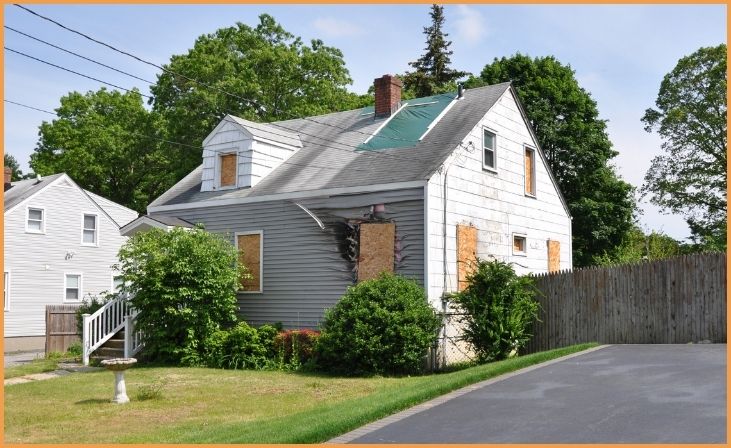
Weather conditions can vary significantly throughout the year, impacting your fence’s ability to withstand high winds. Plan for seasonal changes by inspecting and reinforcing your fence before and after severe weather events. During the fall and winter months, check for any signs of damage caused by snow or ice. Address any wear and tear from high winds and storms in the spring and summer. Proactive planning helps ensure your fence remains resilient and ready to face changing weather conditions.
Conclusion
Bracing your fence against high winds doesn’t have to be a daunting task. By following the tips outlined, you can significantly enhance your fence’s durability and resilience. Regular maintenance, proper installation, and the use of quality materials are key factors in ensuring your fence remains sturdy during extreme weather. Investing time and effort into these preventative measures will help you avoid costly repairs and keep your property safe. Take action today to fortify your fence and enjoy peace of mind during stormy seasons.
FAQs
What materials are best for bracing a fence against high winds?
Steel posts, concrete footings, and high-quality brackets are ideal for reinforcing fences against strong winds.
How often should I inspect my fence for wind damage?
Inspect your fence at least twice a year and after major storms to ensure it remains secure and in good condition.
